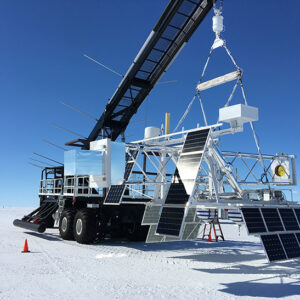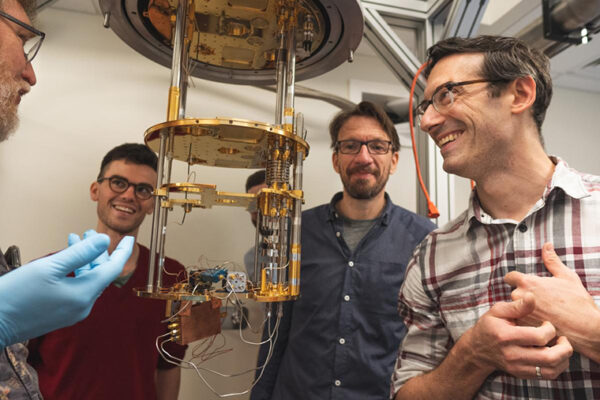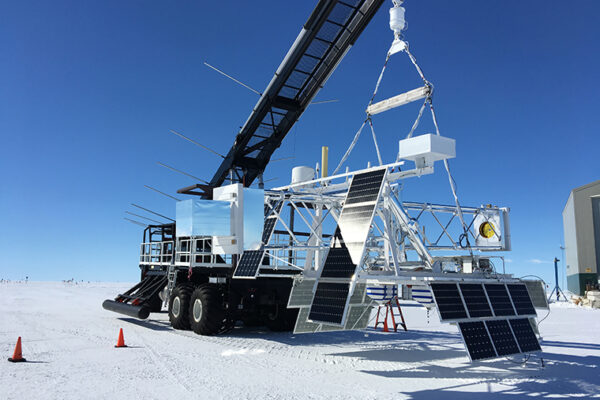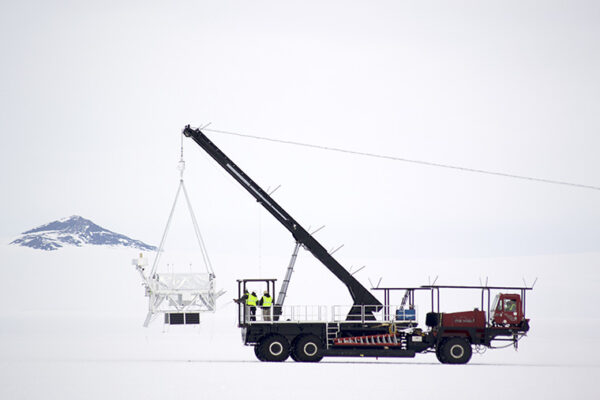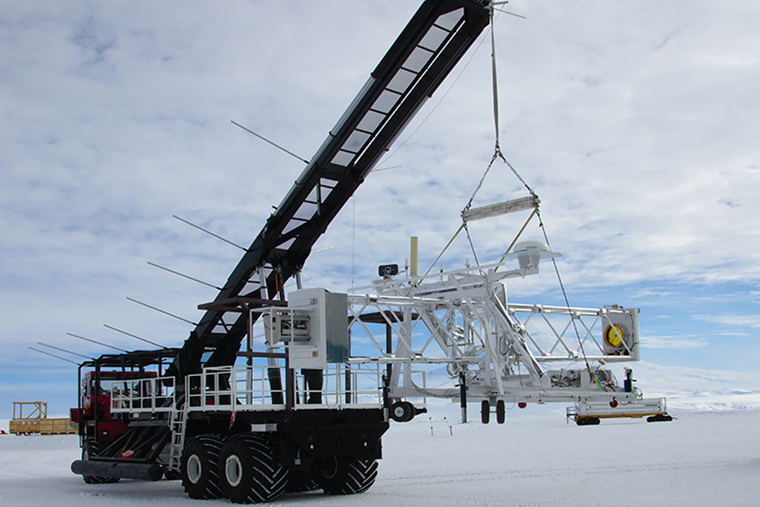
Researchers from Washington University in St. Louis will develop and deploy a new telescope designed to measure the linear polarization of X-rays arriving from distant neutron stars, black holes and other exotic celestial objects. The instrument will be flown on a minimum of two scientific balloon launches as early as summer 2021. The NASA-funded effort builds on promising results from a previous balloon-borne mission known as X-Calibur and is dubbed XL-Calibur.

“The new XL-Calibur will feature a more powerful mirror that will allow us to collect three times more signal,” said Henric Krawczynski, the Wayman Crow Professor of Physics in Arts & Sciences, and the principal investigator for the research effort. “Combining the more powerful mirror with improved focal pane instrumentation, we expect a sensitivity improvement by a factor of at least one order of magnitude.”
Linear polarization is the preferred plane in which the electric field of the X-rays oscillates. It encodes information about the geometries of distant objects (for example, the spin of a rotating black hole), the magnetic fields that surround them and the physical mechanisms that accelerate particles to extremely high energies and prompt them to emit the X-rays.
Krawczynski led the team that developed the successful predecessor, the X-Calibur hard X-ray polarimetry telescope, which flew in December 2018 from McMurdo Station in Antarctica.
Dangling in the stratosphere beneath an enormous balloon at a float altitude of 125,000 feet above sea level, the instrument collects data that can provide new insights into how neutron stars and black holes in a binary orbit grow by gobbling up stellar matter. A paper reporting the results from the 2018 flight is currently under review.
Washington University will lead the science and manage the new XL-Calibur experiment. The researchers will also develop, build and test the upgraded scattering polarimeter device that is central to the mission. NASA is supporting this effort with a grant exceeding $3 million; additional funding is provided by Japanese and Swedish funding agencies.
X-Calibur, a predecessor instrument, was designed to measure the polarization of X-rays emitted from sources in space using a custom array of rotating Cadmium-Zinc-Telluride (CZT) detectors. (Video: Washington University)
The XL-Calibur system will incorporate several innovations to reduce background noise, including thinner detectors and improved shielding.
The experiment includes a 12-meter-long telescope made of carbon fiber tubes, aluminum joints and honeycomb end panels — by contrast, X-Calibur was only 8 meters long. Scientists at Osaka University and the Institute of Space and Astronautical Science at Japan’s space agency (JAXA) will modify a mirror originally intended for the Hitomi satellite so that it can be used for XL-Calibur.
The new instrument could fly as early as 2021 from Esrange Space Center (Sweden) or McMurdo (Antarctica), Krawczynski said. Researchers plan to use it to observe neutron stars, like GX 301-2, and black holes, like Cyg X-1.

“We do astrophysics on balloon flights. They are a great way of testing new instrumentation and new observational techniques on a moderate budget of a few million dollars before implementing a $125 to $250 million space-borne mission,” Krawczynski said.
Krawczynski’s research work is focused on X-ray observations of stellar mass and supermassive black holes, blazars and gravitationally lensed quasars. His team also develops room temperature and cryogenic X-ray and gamma-ray detectors. Krawczynski is part of Washington University’s McDonnell Center for the Space Sciences and the Center for Quantum Sensors.
The XL-Calibur project team includes: the University of New Hampshire; Wallops Space Flight Facility; Goddard Space Flight Center; Osaka University; JAXA; Hiroshima University; RIKEN (a National Research and Development Institute in Japan); the KTH Royal Institute of Technology in Stockholm; and industry partners including Guarino Engineering and G. de Geronimo.
The balloon flights from Esrange (Sweden) and McMurdo (Antarctica) will be supported by NASA and the Columbia Scientific Balloon Facility. The United States Antarctic Program is managed by the National Science Foundation.
